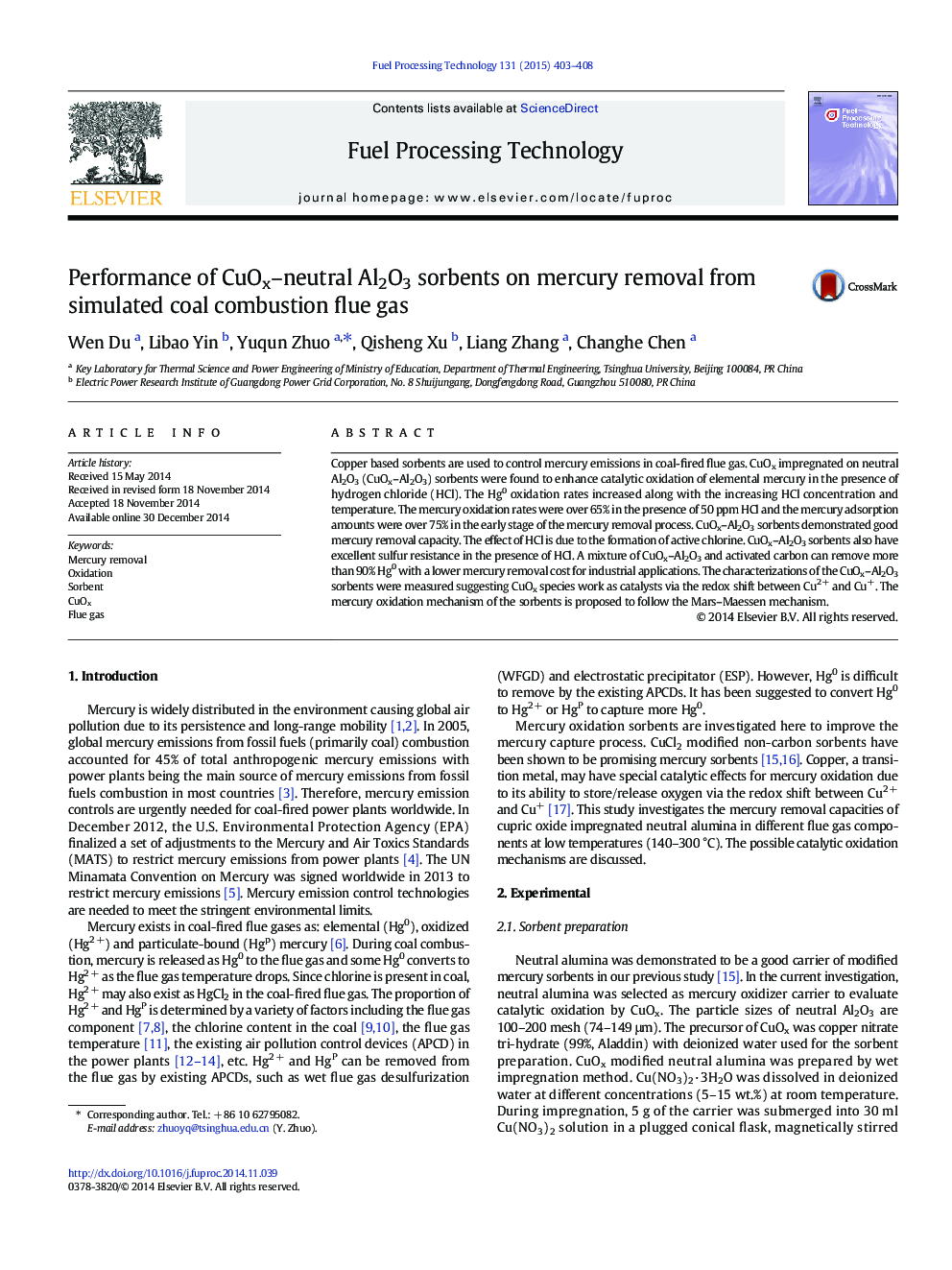| Article ID | Journal | Published Year | Pages | File Type |
|---|---|---|---|---|
| 209381 | Fuel Processing Technology | 2015 | 6 Pages |
•CuOx–Al2O3 sorbents have important catalytic oxidation capacities on Hg0.•CuOx–Al2O3 sorbents have good sulfur resistance in the presence of HCl.•CuOx–Al2O3 can decrease the cost of mercury removal by activated carbon.•CuOx species work as catalysts via the redox shift between Cu2 + and Cu+.•The oxidation mechanism is proposed to follow the Mars–Maessen mechanism.
Copper based sorbents are used to control mercury emissions in coal-fired flue gas. CuOx impregnated on neutral Al2O3 (CuOx–Al2O3) sorbents were found to enhance catalytic oxidation of elemental mercury in the presence of hydrogen chloride (HCl). The Hg0 oxidation rates increased along with the increasing HCl concentration and temperature. The mercury oxidation rates were over 65% in the presence of 50 ppm HCl and the mercury adsorption amounts were over 75% in the early stage of the mercury removal process. CuOx–Al2O3 sorbents demonstrated good mercury removal capacity. The effect of HCl is due to the formation of active chlorine. CuOx–Al2O3 sorbents also have excellent sulfur resistance in the presence of HCl. A mixture of CuOx–Al2O3 and activated carbon can remove more than 90% Hg0 with a lower mercury removal cost for industrial applications. The characterizations of the CuOx–Al2O3 sorbents were measured suggesting CuOx species work as catalysts via the redox shift between Cu2 + and Cu+. The mercury oxidation mechanism of the sorbents is proposed to follow the Mars–Maessen mechanism.
Graphical abstractFigure optionsDownload full-size imageDownload as PowerPoint slide
